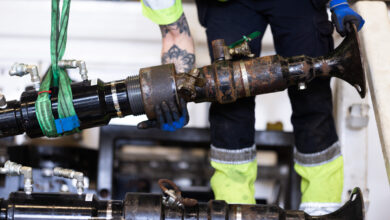Wood Mackenzie: No sign of significant oil production shut-ins at $35/bbl
A new global oil production analysis indicates that 3.4 million bbl/day of oil production is cash negative at a Brent oil price of $35. Since the dramatic drop in prices from late 2014, there have been few halts in production – with approximately 100,000 bbl/day shut-in globally to date. According to the Wood Mackenzie report, the areas with the largest volumes shut-in so far have been Canada onshore and oil sands, conventional US onshore projects and aging UK North Sea fields. However, the number of shut-ins is unlikely to increase at the rate some might expect, as many producers hold out in the hope of a price rebound.
Stewart Williams, Vice President of Upstream Research at Wood Mackenzie, explained, “Our latest 2016 production data indicates that with Brent crude oil prices at US$35bbl, 3.4 million bbl/day of oil production is cash negative, which equates to 3.5% of global supply (96.1 million bbl/day).”
This study collates oil production data from more than 10,000 fields and calculates the cash operating costs – identifying the price at which the fields turn cash negative, and the volume of oil production associated with this price level.
“Since the drop in oil prices from late 2014, there have been relatively few production shut-ins, with less than 0.1% of global production halted so far – around 100,000 bbl/day globally,” Mr Williams continued.
So why aren’t producers turning off the taps? Robert Plummer, Vice President of Investment Research at Wood Mackenzie, said, “Being cash negative simply means that production costs are higher than the price that the producer receives and does not necessarily mean that production will be halted altogether. Curtailed budgets have slowed investment, which will reduce future volumes, but there is little evidence of production shut-ins for economic reasons.
“Given the cost of restarting production, many producers will continue to take the loss in the hope of a rebound in prices. In terms of our current oil price forecast, we have recently revised our annual average to $41/bbl for Brent in 2016,” Mr Plummer said. “The operator’s first response is usually to store production in the hope that the oil can be sold when the price recovers. For others, the decision to halt production is more complex, and we expect that volumes are more likely to be impacted where mechanical or maintenance issues arise and operators can’t rationalize further investment at current prices.”
Wood Mackenzie attributes the hit on Canadian production from oil sands and conventional onshore to high costs and distance from market place. There have also been production shut-in from US “stripper” wells (onshore, ultra-low output wells) and in the North Sea, where some operators have prematurely ceased production of aged fields.
“At a Brent oil price of US$35, Canada has 2.2 million bbl/day of production, which has a negative cash operating cost – predominantly from oil sands and small producing conventional wells in Alberta and British Colombia,” Mr Plummer said. “Venezuela is second with 230,000 bbl/day from its heavy oil fields, followed by the UK with 220,000 bbl/day.”
Mr Williams added: “In the past year, we have seen a significant lowering of production costs in the US, which has resulted in only 190,000 bbl/day being cash negative at a Brent price of US$35. In fact, the biggest reductions have been from tight oil, the majority of which only becomes cash negative at Brent prices well-below US$30/bbl.”




